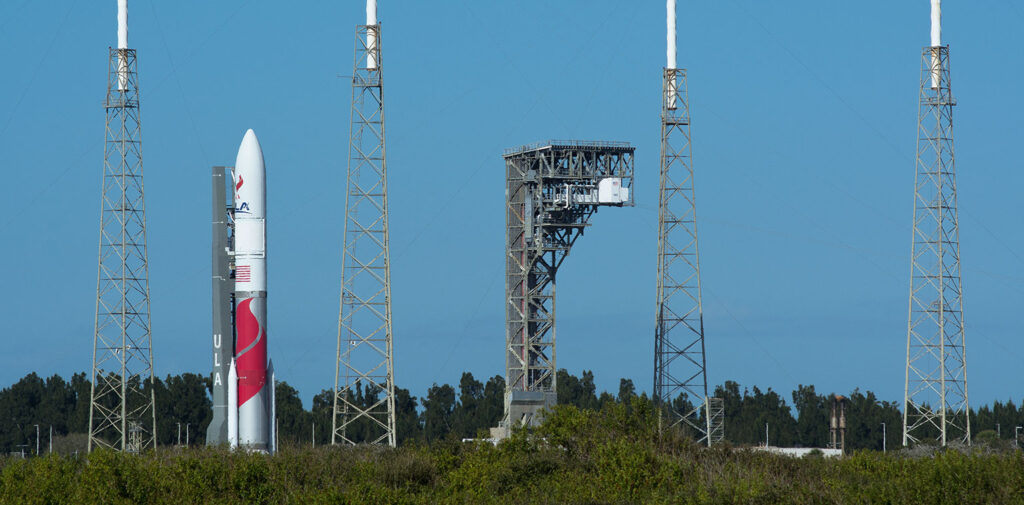The Peregrine 1 space mission, pictured shortly before its January 2024 launch, failed to reach the moon because of a fuel leak, but five microrobots on board represented a major advance for Mexico’s fledgling space program.
THE WATCH STAFF
With advances in space-ready nanotechnology, a new space education center on the horizon, and an emphasis on resilience, Mexico is making huge strides with its space ambitions. Mexican space authorities recently hailed the development of five microrobots designed as “robot bees” for lunar use. Weighing a mere 56 grams each, the microrobots are solar powered and have tiny fins to help them navigate the lunar dust. The nanorobots were included in the Colmena mission aboard the Peregrine 1 spacecraft, which is the first privately operated moon initiative.
The Peregrine 1 blasted off from Cape Canaveral, Florida, on January 9, 2024. Despite suffering a mission-ending malfunction after launch, researcher Gustavo Medina – head of the Space Instrumentation Laboratory at the Autonomous University of Mexico Institute of Nuclear Sciences (UNAM), and head of the Colmena project – said the mission was an opportunity for Mexico to find “its niche” in space exploration and science. By specializing in nanotechnology, Mexico can bring unique contributions to space advances. Nanotechnology lets many robots be created. They’re tiny but efficient, like bees, which Medina described to the Mexican newspaper El Pais as “simple beings that together manage to do great things, because there are many of them, and they know how to cooperate.”
It’s a matter of spreading the technological risk, Medina said. “Instead of sending a big machine to extract a mineral, which costs a lot and if it breaks everything is lost, I can send 100,000 tiny robots, and if one dies nothing happens. The project can go on. That’s the philosophy,” he said. Medina also said that despite its setbacks, the Colmena mission was the first time that Mexico has taken part in a lunar mission, and the country should be proud its microrobots have reached the testing state in space.
Also in January 2024, a U.S.-based space technology company announced plans to build an ambitious space education center in Mexico. Merida Aerospace said it was set to begin work on the National Rocket and Space Center in Mexico’s Yucatan Peninsula. The proposed center would be “a multifaceted facility, equipped with state-of-the-art amenities. These include a museum, observatory, and immersive experiences open to the public. Additionally, the center will feature space camps, offering hands-on training for students and individuals interested in space operations,” according to a news release from the company.
Merida also envisions an “active hub for astronautical technology development” with laboratory space and an emphasis on astronautics, a field of aerospace engineering. “By providing state-of-the-art facilities and educational programs, we aim to inspire and equip engineers to excel in the space industry,” a spokesperson for Merida Aerospace said.
Agencia Espacial Mexicana (AEM), the Mexican Space Agency, was created in 2010. The agency partnered with UNAM on the microrobot effort and launch, which cost about $1.5 million. Merida said it plans to collaborate with AEM on the space center and strengthen ties with NASA as Mexico continues to strengthen its space program.

